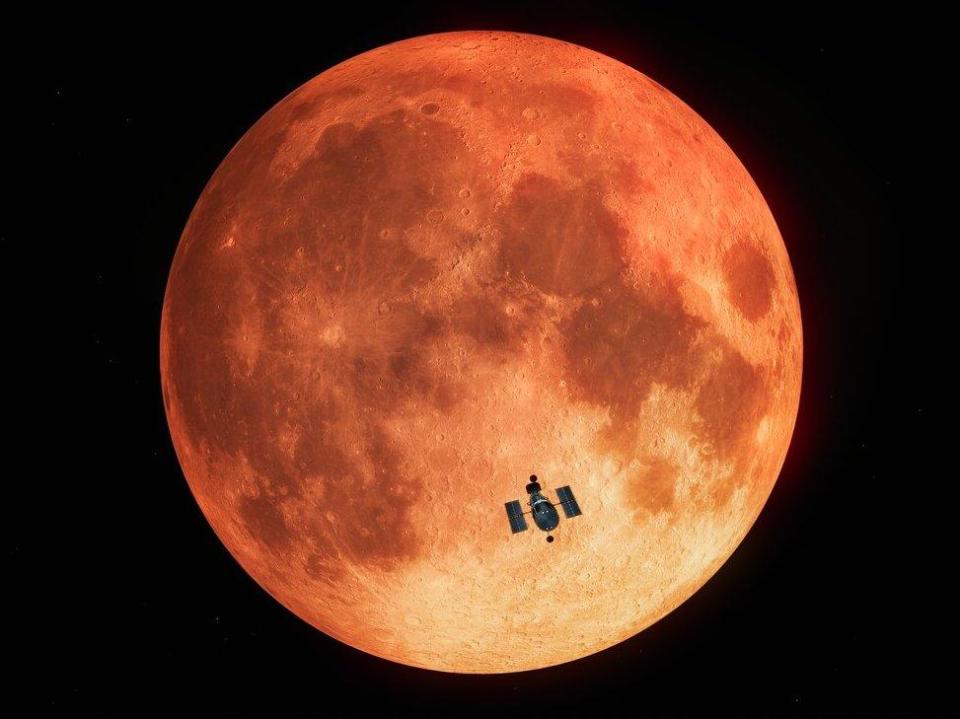Nasa's Hubble makes first ever observation of a total lunar eclipse – and could help us find alien life

Scientists have used the Hubble Sapce Telescope to make the first observation of a total lunar eclipse – and hope it could set us on our way to finding lift elsewhere in the universe.
The method of observing the eclipse and the Earth serves as a test run of the way that they hope, in the future, to observe other planets like our own that are much further away.
The research represents the first time that a total lunar eclipse has been captured from a space telescope, and also the first time one has been studied in ultraviolet wavelengths.
In the future, scientists hope they can examine exoplanets, using large telescopes that are still in development to peer deep into space. In doing so, they hope to be able to examine the atmosphere of those distant worlds, giving them a deep understanding of conditions there despite being so far away.
To test the techniques that will power those discoveries, researchers turned to the only example of an inhabited planet they are aware of: our own. As well as being a prime example of a planet that is able to support life, its alignment with the Sun and Moon during a total lunar eclipse are a mimic of the way we see "transiting" planets, which become visible to us as they cross in front of their star.
Because of that alignment, astronomers were able to look at the Moon and use it as a mirror to see the sunlight that has been reflected through the Earth's atmosphere. Doing so using a space telescope like Hubble allows them to do so without having to look through Earth's atmosphere first.
Through the observations, researchers were able to detect the fingerprint of ozone. That is key to life on Earth, and so the detection of it on other planets would be a key indication that they could support life.
“Finding ozone in the spectrum of an exo-Earth would be significant because it is a photochemical byproduct of molecular oxygen, which is a byproduct of life,” said Allison Youngblood of the Laboratory for Atmospheric and Space Physics in Colorado, USA, lead researcher of Hubble’s observations.
In the latest study, conducted during the lunar eclipse at the beginning of 2019, Hubble recorded the ultraviolet signal that allowed scientists to pinpoint the signature of ozone. Other telescopes also watched for different key ingredients, such as oxygen and water.
“To fully characterize exoplanets, we will ideally use a variety of techniques and wavelengths,” explained team member Antonio Garcia Munoz of the Technische Universität Berlin in Germany. ”This investigation clearly highlights the benefits of the ultraviolet spectroscopy in the characterization of exoplanets. It also demonstrates the importance of testing innovative ideas and methodologies with the only habitable planet that we know of to date!”
Scientists hope that in the future they can carry out similar investigations on other worlds. When they pass in front of their sun, there is a glowing "halo" that can be spotted around them, and each of the chemicals in its atmosphere gives off a signature colour that can be detected by telescopes and used to understand the composition of those worlds.
Hubble was not designed to look for such chemicals on planets outside our solar system – they had not been found when it was first launched, 30 years ago. But it has already been used to do so, and not only on our own planet, observing the atmospheres around other gas giants, but smaller exoplanets cannot be picked up by Hubble.
Researchers hope that they can better look at such worlds using the James Webb Space Telescope, an observatory that is set to be launched in 2021 but has been repeatedly delayed. That will use similar techniques to look around the rest of space and examine our world in much the same way.
“We expect JWST to push the technique of transmission spectroscopy of exoplanet atmospheres to unprecedented limits,” added Garcia Munoz. “In particular, it will have the capacity to detect methane and oxygen in the atmospheres of planets orbiting nearby, small-sized stars. This will open the field of atmospheric characterization to increasingly smaller exoplanets.”
Read more
Solar systems could have a large number of habitable planets

